Trusted By
Residential
Durable, Hygienic & Seamless Interior Epoxy Flooring
Interior epoxy flooring has become a popular option over traditional flooring choices. Designers, Architects & Builders have realised the extraordinary design possibilities, the hygienic and durable functionality and the low maintenance benefits.
Whether you opt for a standard finish from our blended range, or something more bespoke, it's important that the final specification and quote takes into consideration these factors:
- Slip resistance - depending on the final finish, epoxy floors can be slippery just like ceramic tiles, when wet. We offer different levels of slip resistance and will recommend the one most suitable for you, which will depend on who will be using the area. (eg: children, elderly, people with limited mobility, animals, etc).
- Level of UV protection - although internal, UV ‘bounces’ so it’s not necessarily just direct sunlight that impacts your floor. We review the areas for natural light penetration and for certain internal lighting types which also emit UV (albeit in small portions) and help you with your colour choice. (Lighter colours are traditionally the worst for UV susceptibility).
- Impact resistance - Sometimes the price you pay for aesthetics can be functionality. Beautiful swirly high gloss floors are typically less robust than other forms of internal flooring, so we recommend protection under furniture feet, and in other areas where the floor might be impacted by equipment or dropped objects.
- Skirting boards - ideally, the boards are off when we work on your floor. Upon completion and curing, the boards can be re-installed or replaced. It’s at this stage that we advocate a polyurethane/silicone seal along the base of the skirting boards, which will finish the floor off nicely, and create a seal to prevent bugs from hiding there.
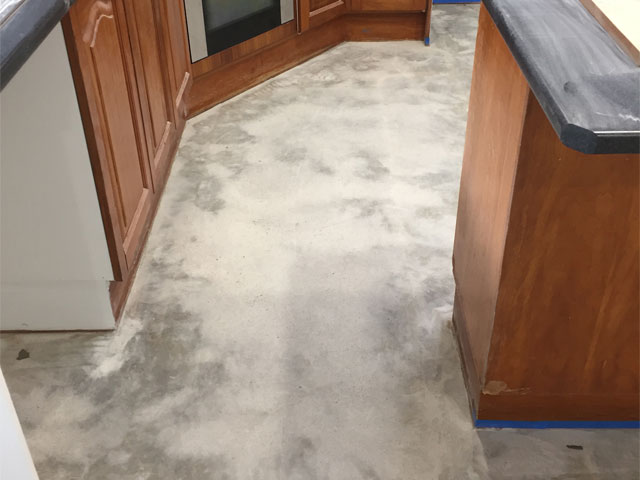
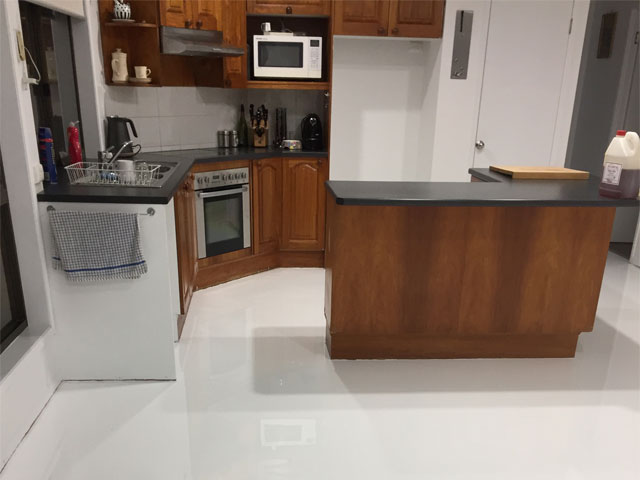
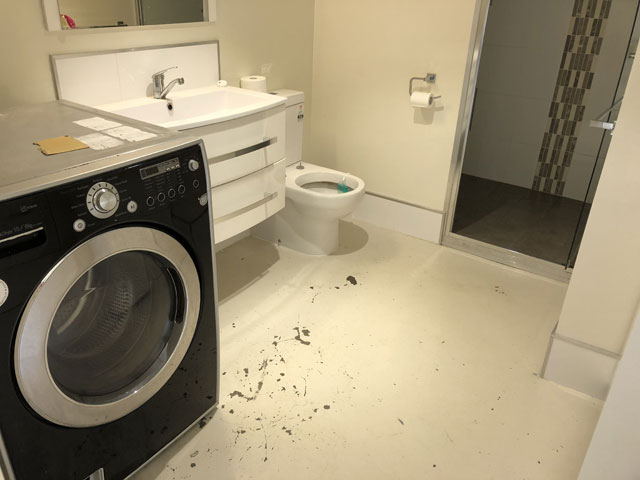
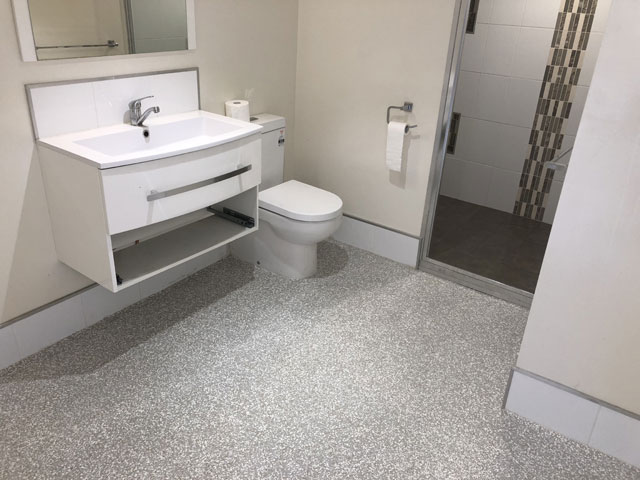
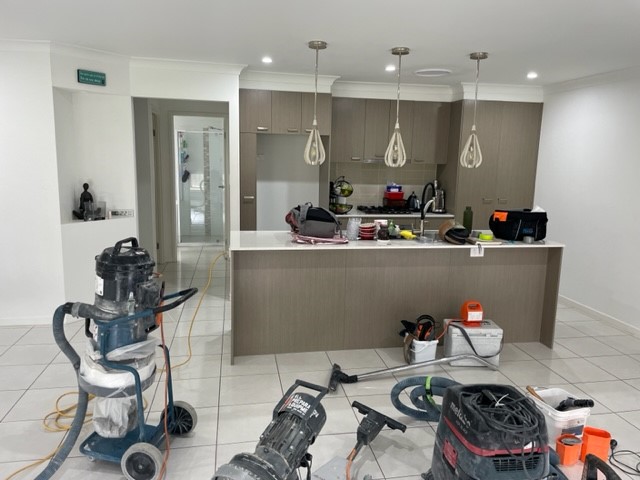
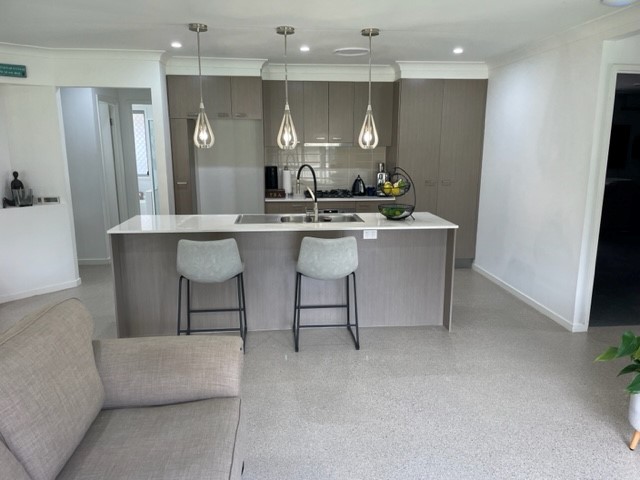
Preparation for interior epoxy flooring
The best base for receiving epoxy coating is concrete, providing that it is in the right condition. See our article The Many Issues That Sub-Standard Concrete Causes for an indepth look at what makes up a great concrete substrate, and case studies of problems that poor concrete have caused.
Other substrates include fibre cement (FC) sheeting and tiles. Overcoating tiles with an epoxy coating is becoming quite common as home owners discover the benefits of having a seamless floor with no grout lines that may discolour and are tricky to keep clean. Tile overcoating is a more involved process, but if your floor is considered a candidate for our work, is much better than ripping them up. See our article on The Benefits of Overcoating Tiles with Epoxy for indepth details.
Finish options
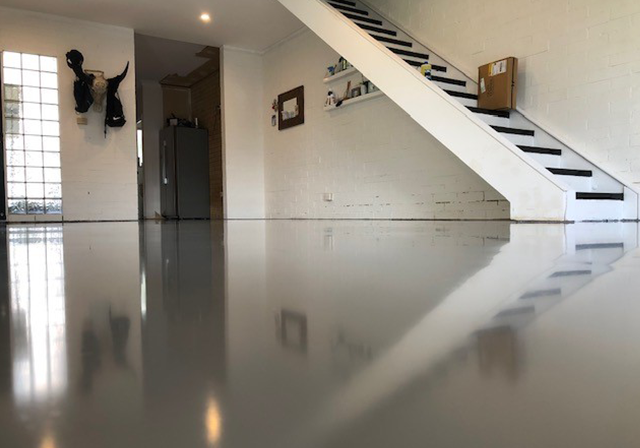
Straight colour
You can opt for a high gloss or a more subtle matte finish. For a ‘pure’ finish, this a straight epoxy provides truer reflections. For something more robust, a harder wearing polyurethane, polyurea or polyaspartic is used to top coat the floor.
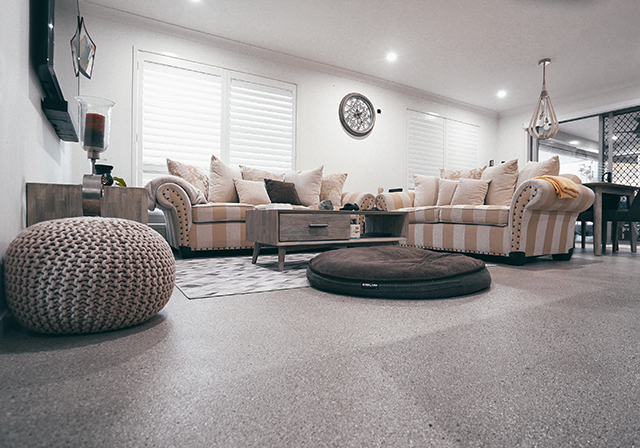
Refined blend
Our Refined Blends are a popular soft and durable option for new builds, refurbished buildings, add-on areas and for overcoating tiled floors. It's perfect for use where kids and animals play inside, or for households that entertain regularly.
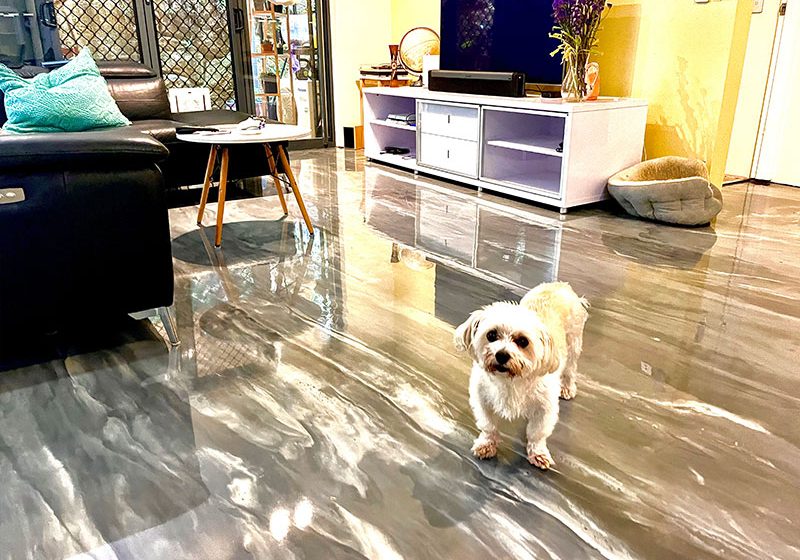
Custom finishes
There are so many options - from a two tone or metallic finish through to a combination of styles and products that gives you your own unique design. During our consultation we'll explain bespoke finishes, and discuss the full range of things to consider.







